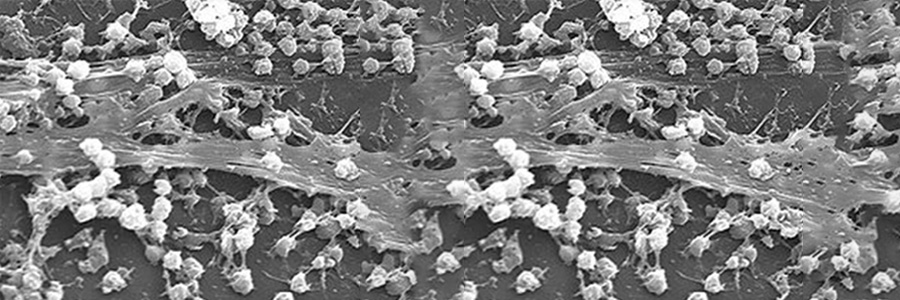Dept. of Health & Human Services Issues Legionella Requirements
A recent memo from the U.S. Dept. of Health & Human Services’ Centers for Medicare & Medicaid Services directed state agency directors to reduce the risk of legionella in healthcare facility water systems.
“CMS expects Medicare-certified healthcare facilities to have water management policies and procedures to reduce the risk of growth and spread of legionella and other opportunistic pathogens in building water systems,” the memo stated.
Among the directives in the document is for surveyors to verify that facilities “conduct a facility risk assessment…; implement a water management program that considers the ASHRAE industry standard and the CDC toolkit, and includes control measures such as physical controls, temperature management, disinfectant level control, visual inspections, and environmental testing for pathogens; and specify testing protocols and acceptable ranges for control measures, and document the results of testing and corrective actions taken when control limits are not maintained.”
According to the Centers for Disease Control (CDC), about 5,000 cases of legionella are reported each year. Reported cases are up 200% over the last 10 years. CDC investigations found that almost all legionella outbreaks were caused by problems preventable with more effective water management.
“The Centers for Medicare & Medicaid Service (CMS) is aware of multiple recent [legionnaires disease] outbreaks in hospitals and long-term care facilities as reported by the CDC, state and local health departments, or investigated by State Survey Agencies (SA),” HHS stated. “Outbreaks generally are linked to environmental reservoirs in large or complex water systems, including those found in healthcare facilities such as hospitals and long-term care facilities. Transmission from these water systems to humans requires aerosol generation, as can occur from showerheads, cooling towers, hot tubs, and decorative fountains.”
Addressing Legionella With Piping Selections
The ANSI/ASHRAE 188-2015 standard for risk management of legionella in building water systems recommends the following treatment protocol:
- Maintain hot water storage above 140 degrees F where practical in healthcare facilities, nursing homes, and other high-risk situations
- Where decontamination is necessary, typically due to implication of and outbreak of Legionellosis, raise hot water to 170 degrees F and maintain while progressively flushing each outlet for minimum of five minutes
- Shock chlorination may be used, and would require chlorination of the water heater to 20-50 ppm for 2 to 24 hours
Corzan CPVC is one of the only piping materials ideally suited to resist biofilm growth as well as withstand ASHRAE 188-compliant decontamination procedures.
- A 1999 study “Biofilm Formation Potential of Pipe Materials in internal installations, KIWA 1999” found that biofilm growth was highest in copper and PEX. Stainless steel, CPVC, and polypropylene experience less growth by as much as half. In the same study, the number of legionella in the test water came in above 150 cfu/ml for polypropylene and polybutylene, above 100 cfu/ml for PEX and stainless steel, but less than 25 cfu/ml for CPVC.
- Pipe materials with a smoother surface have less potential for biofilm growth. CPVC and PEX are two of the smoothest; copper starts smooth but as it ages becomes rougher.
- Temperature and chemical treatments recommended for disinfection also can have an impact on pipe material. Corzan CPVC is naturally chlorine-, chloramine-, and chlorine dioxide-resistant. Polyolefins (polypropylene, PEX, and polybutylene) require antioxidants to protect against chlorine and disinfection byproducts like hypochlorous acid. Polypropylene manufacturers strictly recommend against use with chlorine dioxide; per ASTM F2023. PEX is not rated for service with chlorinated water above 140 degrees F.
To read the full HHS memo, click here.


